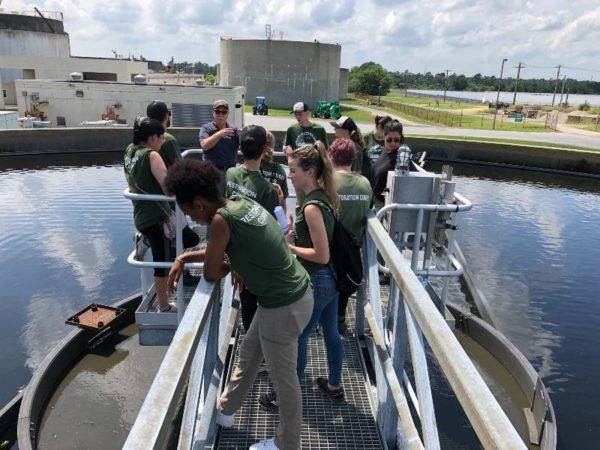Cumberland County youth work together to protect their streams
Every summer, young people in Cumberland County explore different green
careers through the American Littoral Society’s Restoration Corps program. The
summer internship program exposes youths to the wonderful parts of our South
Jersey waterways, and provides education as well as hands-on training and
experience in environmental stewardship and restoration.
This year was a bit different than previous years, for the obvious reasons but also in a few changes that were made to the program. We hired two interns, one in fall 2020 and the other in early 2021, who would spend the next few months getting an early start at the job so that they could be “crew leaders” when the rest of the group joined at the end of the school year. They planted trees to create a more robust riparian buffer along the Cohansey River at Veterans Memorial Park in Bridgeton, collected water quality data at our 4 stream monitoring sites using a YSI sensor, started a road salt monitoring program, removed invasive vines from our tree planting project at Giampietro park in Vineland, helped us plan some of our future rain gardens by scoping out the sites and testing the nearby waters, cleaned up trash from around and directly in the Indian Field Branch stream in Bridgeton, and assisted with a class from Cumberland Regional that came out to sample macroinvertebrates from a stream on their campus, among many other activities.
Crew Leaders Estefany Soto and Nick Corwonski
-

testing water quality with the YSI -

picking up trash from Indian Field Branch -

exploration at Loper Run
As the end of the school year drew near, it was time to start recruiting the full cohort of students for the summer program. One of the things we had done with our crew leaders was to do a tree identification activity with a few classes from Schalick High School at an old riparian buffer planting site from several years ago. One of the students from that class, Emma Donelson, ended up joining the program and planted 300+ additional trees at that site with her classmates and fellow interns just before the end of the school year. Another intern, Sophia, pointed out the unusual circumstances of this year: “after a year of not meeting anyone face-to-face nor taking in-person classes, being a part of the R-corps was the perfect foundation for interacting with people and learning hands-on again.”
Schalick High School Riparian Buffer Tree Planting
-
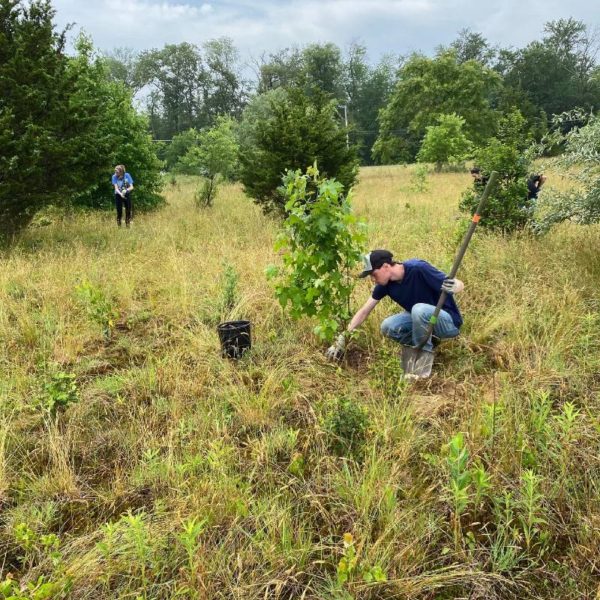
Richard Strittmatter planting a tree -
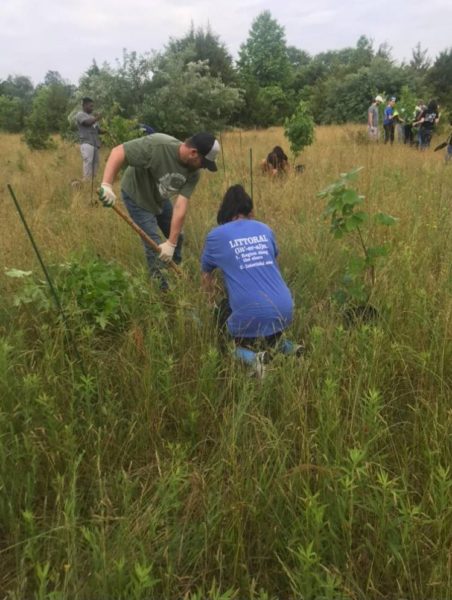
Nick Corwonski & Estefany Soto
A lot of the job is maintaining our existing green stormwater infrastructure projects, like weeding and mulching rain gardens, or invasive removal, weed whacking, and fixing tree tubes at some of our riparian buffers. The crew leaders took the lead in training the new interns on how to do the work. We like to tell people when we install these projects that most of them are low maintenance, but not no maintenance!
Green Stormwater Infrastructure Maintenance
-
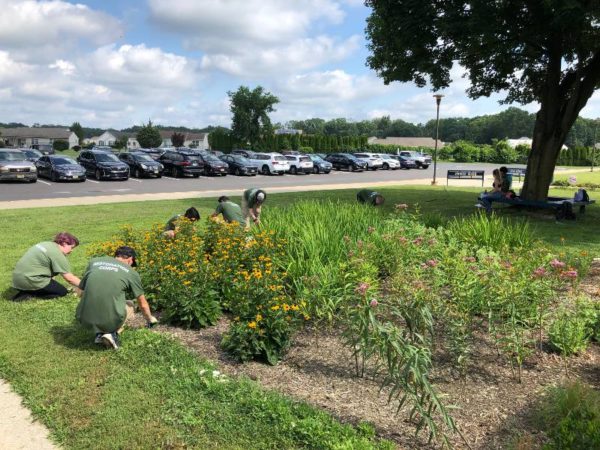
weeding one of the Rossi Elementary School rain gardens -

fixing tree tubes at Indian Avenue School
The other big ongoing project of the program is to assist us in our water monitoring program. This year, an expert from Stroud Water Research Center conducted an official, multiday training so that each intern could be certified to conduct biological and visual assessments that would be accepted by the NJ Department of Environmental Protection! This culminated in a test on benthic macroinvertebrate identification. Our youngest intern, Anna Nichols, said “I had never known macro invertebrates lived in streams. In the beginning of the summer I had trouble with identifying the macro invertebrates but as the summer went on I became more comfortable with identifying them.”
Water Quality Testing
-

the gang counting macros -

Anna Nichols writing down data -

Sophia Milone using the YSI -

Lexi Kelley looking for macros -
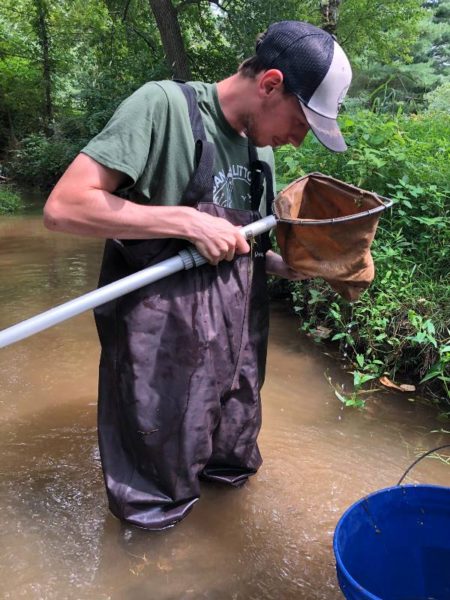
Richard Strittmatter looking for macros -

AJ Bello reading the flow meter -
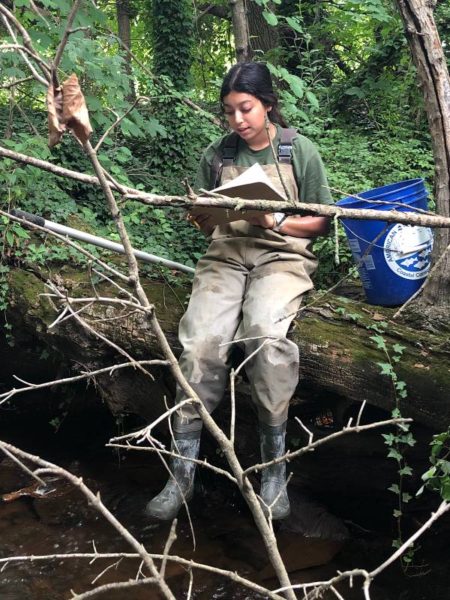
Ann Mathew writing down data -
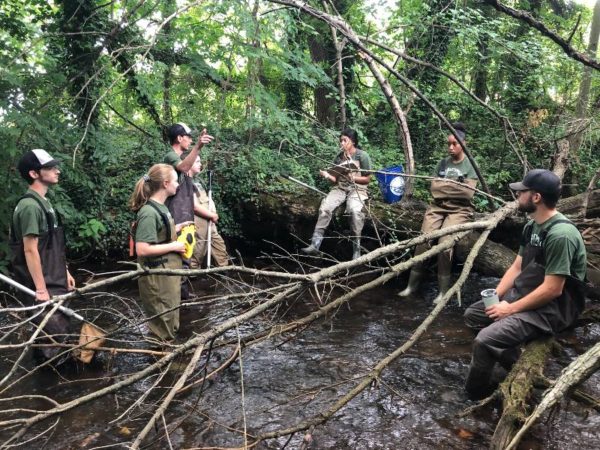
discussion for a visual assessment
The Restoration Corps got to experience a wide breadth of activities in the environmental field. They spent a few different days picking up trash in Bridgeton, sampled macroinvertebrates with the same Cumberland Regional class (apparently the students enjoyed it so much that they voted to do it again for a last-week-of-school activity! I think the fact that it got them outside after a year+ of computers and masks helped them to appreciate it), they removed invasive honeysuckle vines, and ran a series of presentations for kids at the Cumberland Library and at a summer program at the Alms Center in Bridgeton. This last task was certainly challenging for some of them (it turns out that little kids don’t always listen, who knew?), but environmental education can’t just start at high school!
Educational Programming
-
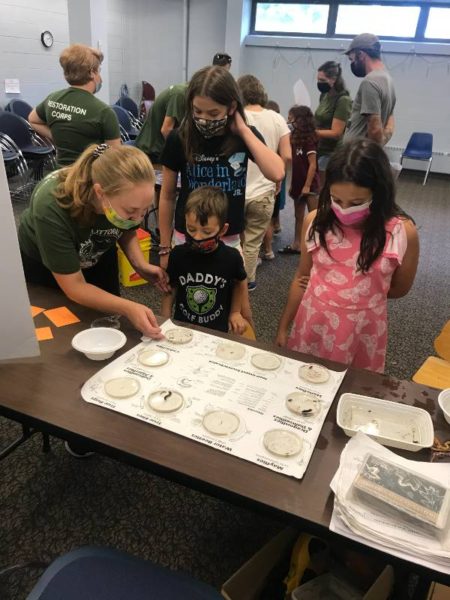
Sophia teaching about macroinvertebrates -
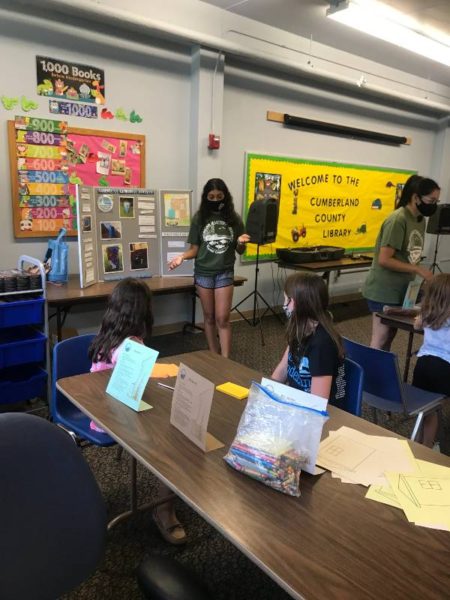
Ann Mathew teaching about rain barrels -

Richard & Rebecca teaching about oyster reefs and how they filter water -
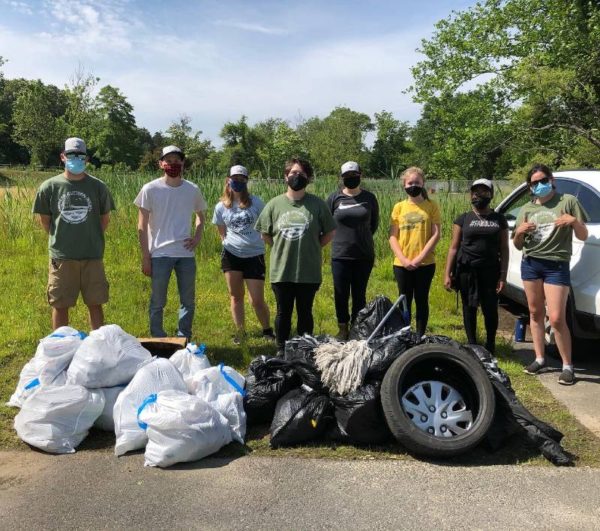
first full day, picking up trash in Bridgeton -
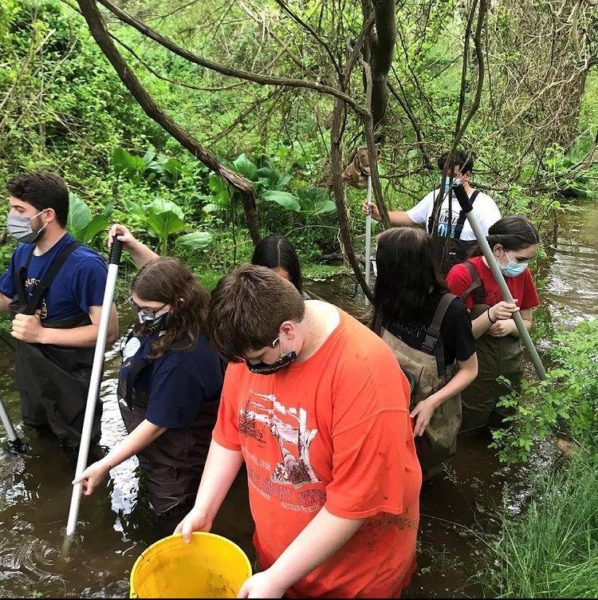
Cumberland Regional High School class -

a job well done
They also got a taste of some other local environmental career paths. Mill Creek Urban Farm in Bridgeton, which grows produce for local food pantries using a variety of methods including different forms of hydroponics, had a particular impact on some of our interns:
“Being there for just a few hours ignited a deep-rooted passion within me to participate in community-run agriculture and garden on my own. Meeting the lovely people who run the farm, learning about the various hydroponic growing methods, and being among the crops were such illuminating experiences. I’d love to go back and volunteer once I’m close to home again.” – Sophia Milone
One of our crew leaders, Nick Corwonski, was actually just hired as their Head Grower!
Mill Creek Urban Farm
-

hydroponic lettuce -
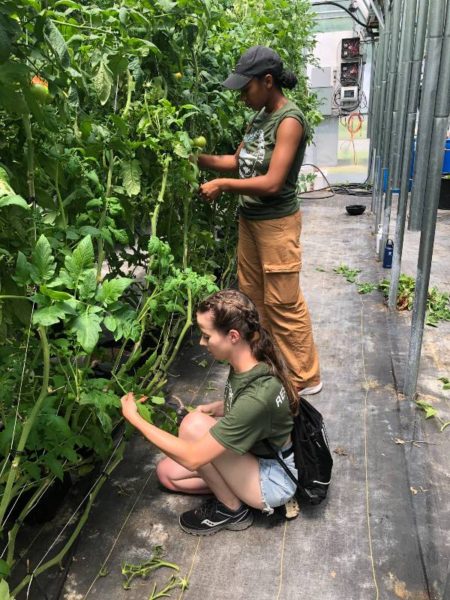
Emma Donelson & Salome Reyes pruning tomatoes -

Nick Corwonski, future head grower at Mill Creek!
The Restoration Corps also got a behind-the-scenes tour of the Landis Sewage Authority in Vineland. Water quality isn’t all about pretty flowers and bugs – it’s also about, as Executive Director of the LSA Dennis Palmer put it, “being in the used-food business.”
Landis Sewage Authority
And of course, everything flows downstream, and in Cumberland County that means everything eventually makes its way down to the Delaware Bay. They spent some time there learning about oyster reefs, horseshoe crabs, migratory shore birds, and tidal salt marshes. What we do upstream has an impact downstream, affecting both the ecosystems and the local economy that relies on the bay.
Delaware Bay
-
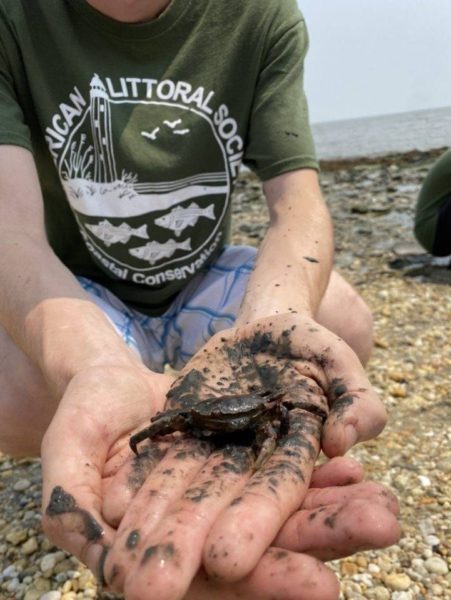
black-fingered mud crab -
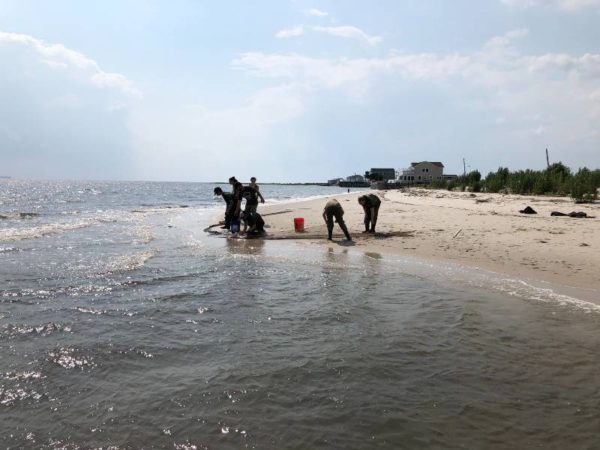
seining -
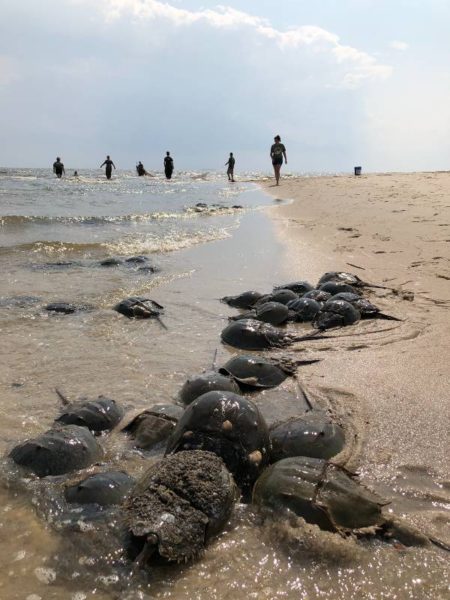
horseshoe crabs
For the ultimate activity on the last full week of this year’s Restoration Corps (which also happened to be one of the hottest of the summer!), we were joined by Rutgers Water Resources Center and built a series of 6 rain gardens at Indian Avenue Elementary School in Bridgeton. After the heavy machinery dug them out, they leveled the garden beds, leveled the sand and compost mixture that was dumped on top, spread the mulch, and dug trenches for the pipes that would drain from several downspouts on the school and an annex building. Rutgers showed some of them how to use the depth sensing equipment and how to read the engineered blueprint. Needless to say it was a lot of work in the 90+ degree weather, but I think everyone was very happy with how it all turned out! These gardens will divert stormwater that was otherwise running straight to Jackson Run, a tributary of the Cohansey River, instead letting it percolate into the aquifer.
Indian Avenue School Rain Gardens
-
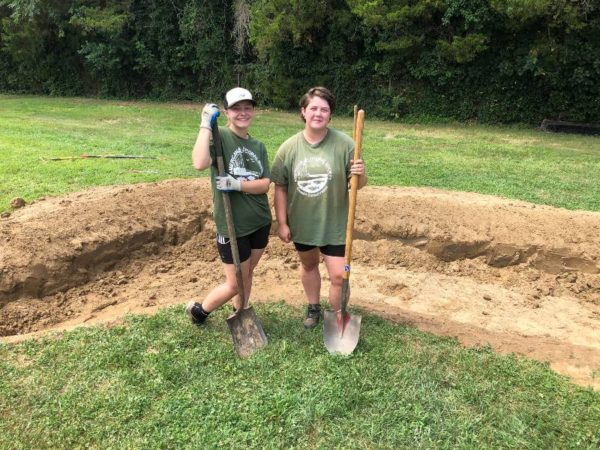
Sophia Milone & Rebecca Carpenter -

Rebecca, Sophia, and AJ spreading sand -
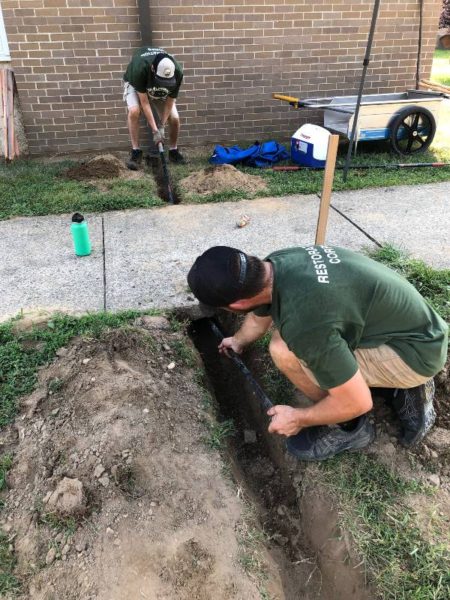
Nick & Richard digging a trench -
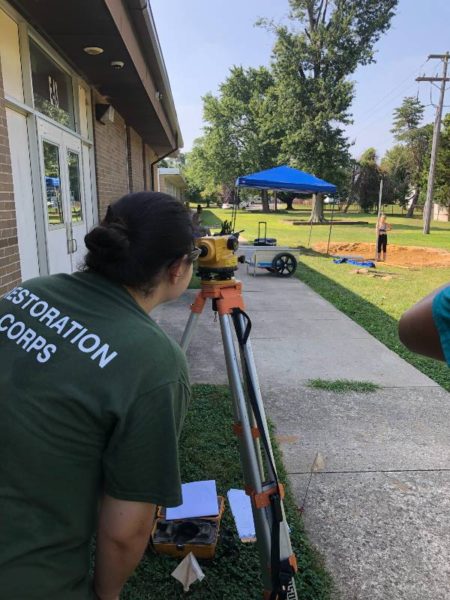
Lexi & Emma making sure the garden is the correct depth -
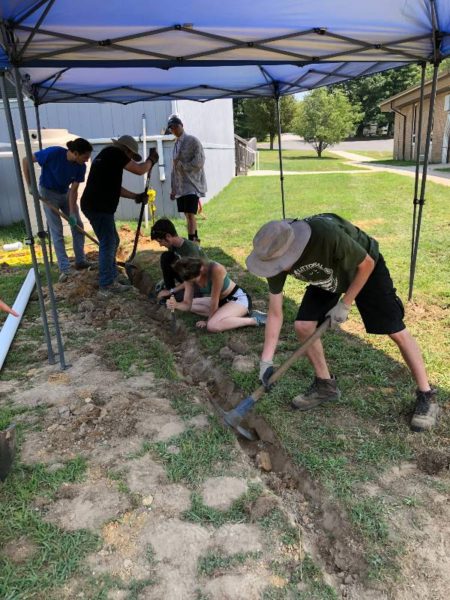
digging a trench, with Richard on the pickaxe doing most of the work
(as usual) -
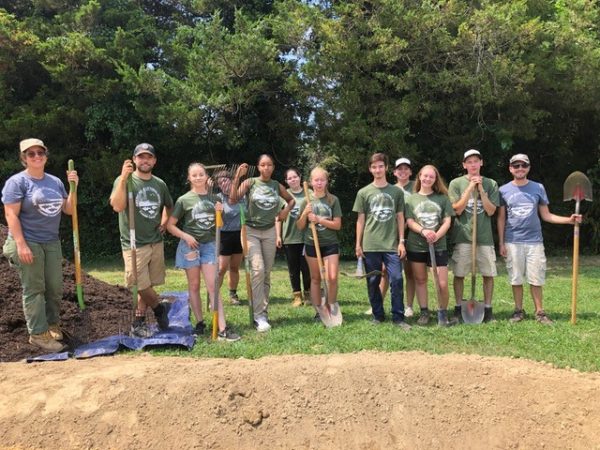
a job well done leveling the garden
Sophia Milone wrote, “Our experiences monitoring streams, tending and building rain gardens, and seining in the bay have made me feel more equipped and eager to pursue a career that isn’t strictly office-bound. Working hands-on and learning via observation were revolutionary to how I view myself as a learner; hearing my coworkers and employers share their experiences in the environmental science field made me consider a long-term career outside of policy work. While I still plan on dedicating some of my future work to enacting sustainable legislation and participating in the governmental facet of environmental science, this internship will encourage me to never shy away from the physical, infrastructure, monitoring side of the field.”
Emma Donelson wrote that it was “the absolute best summer of my life as an intern for the American Littoral Society. I met so many amazing people who became like a second family to me, learned so much, and helped make a positive impact on the health of our coast. I wouldn’t trade this experience or the memories I made for anything in the world.”


